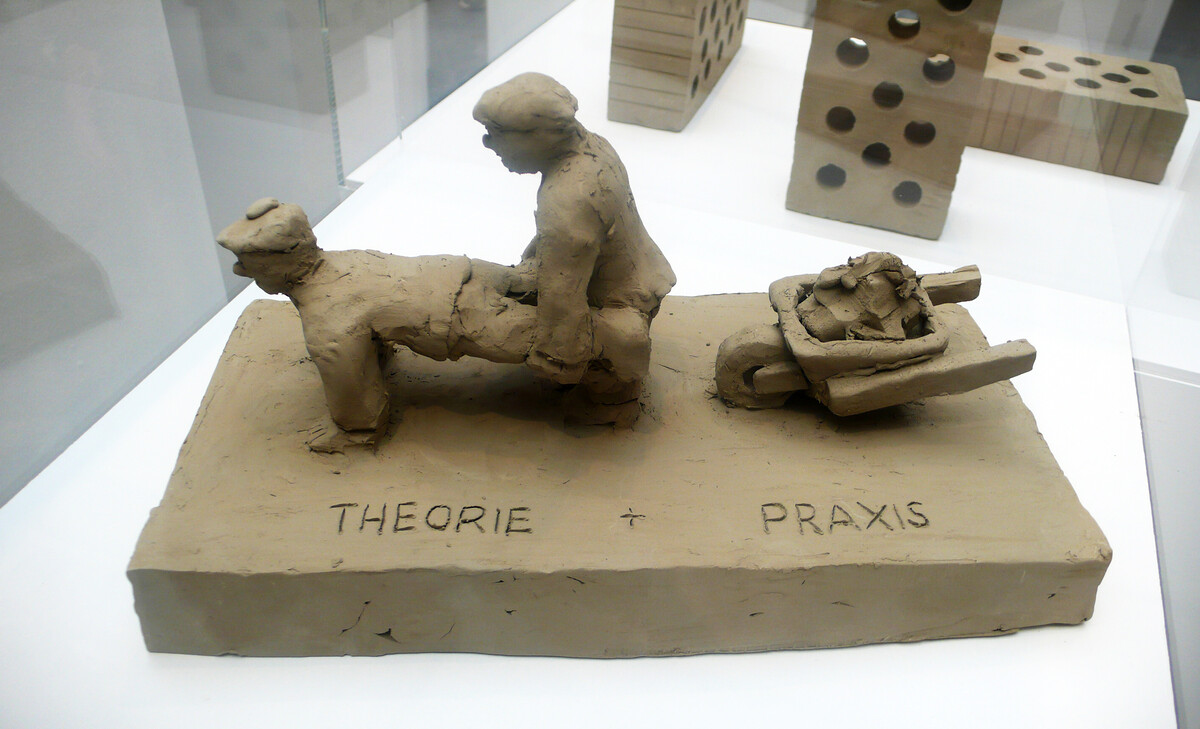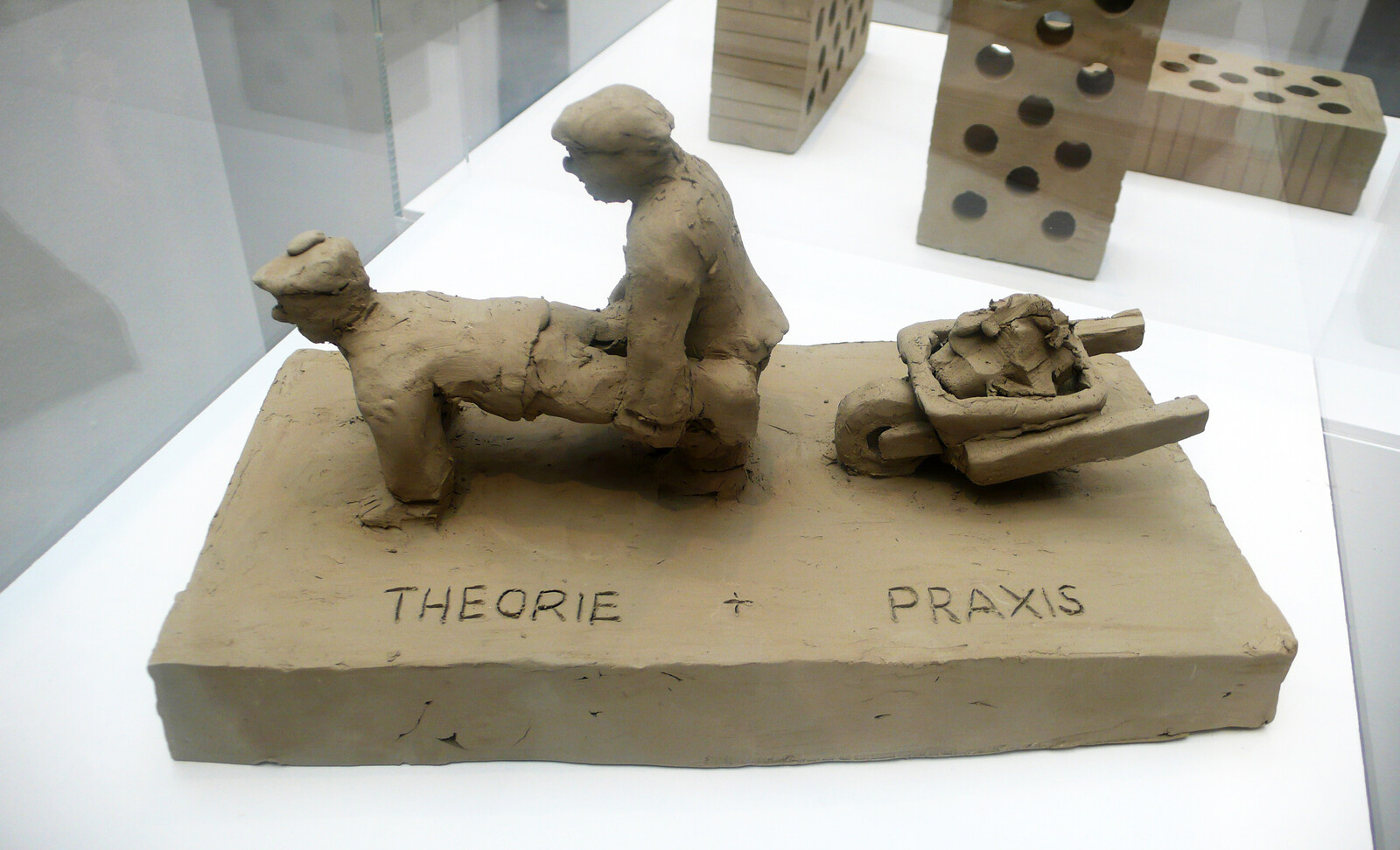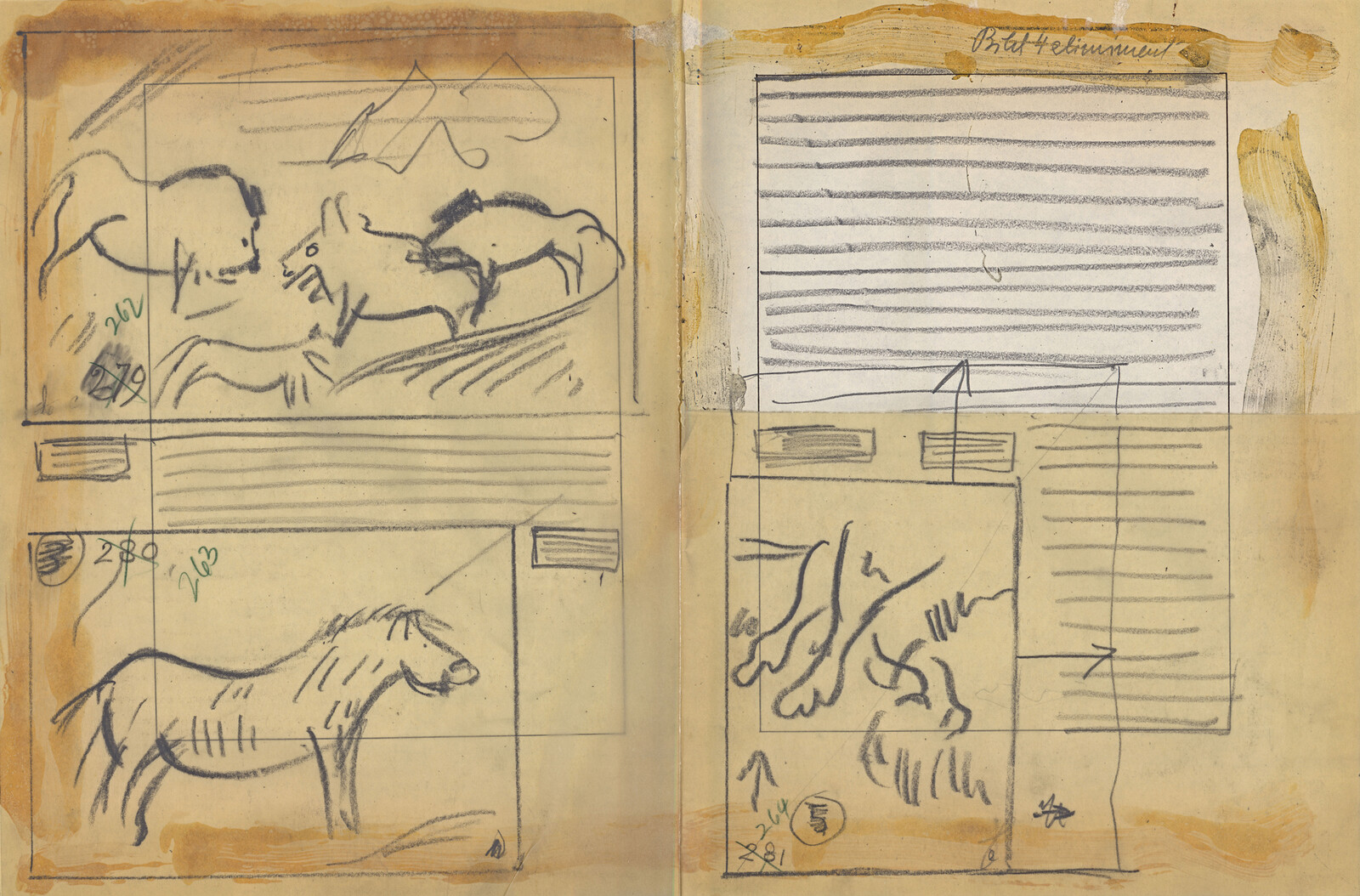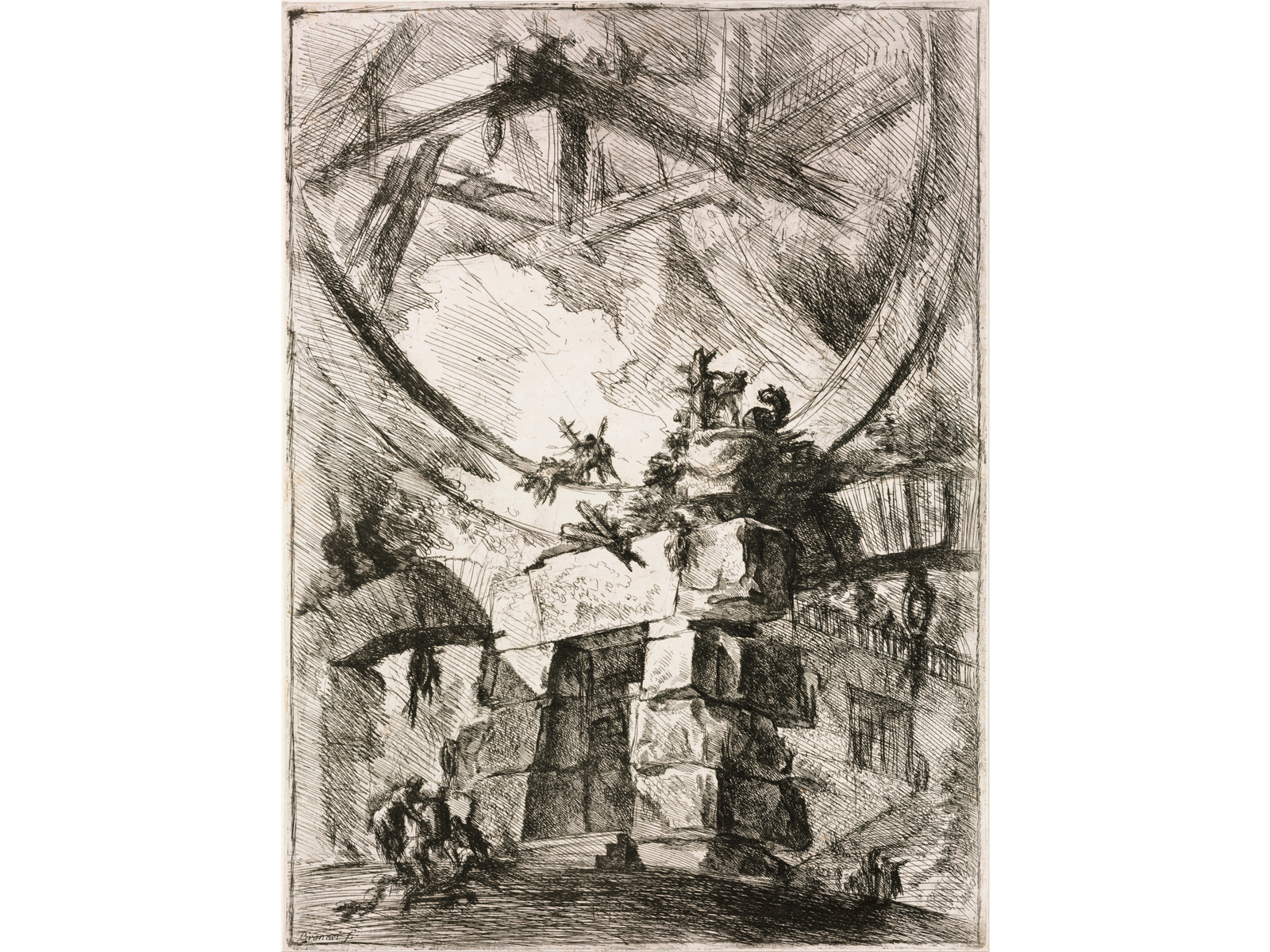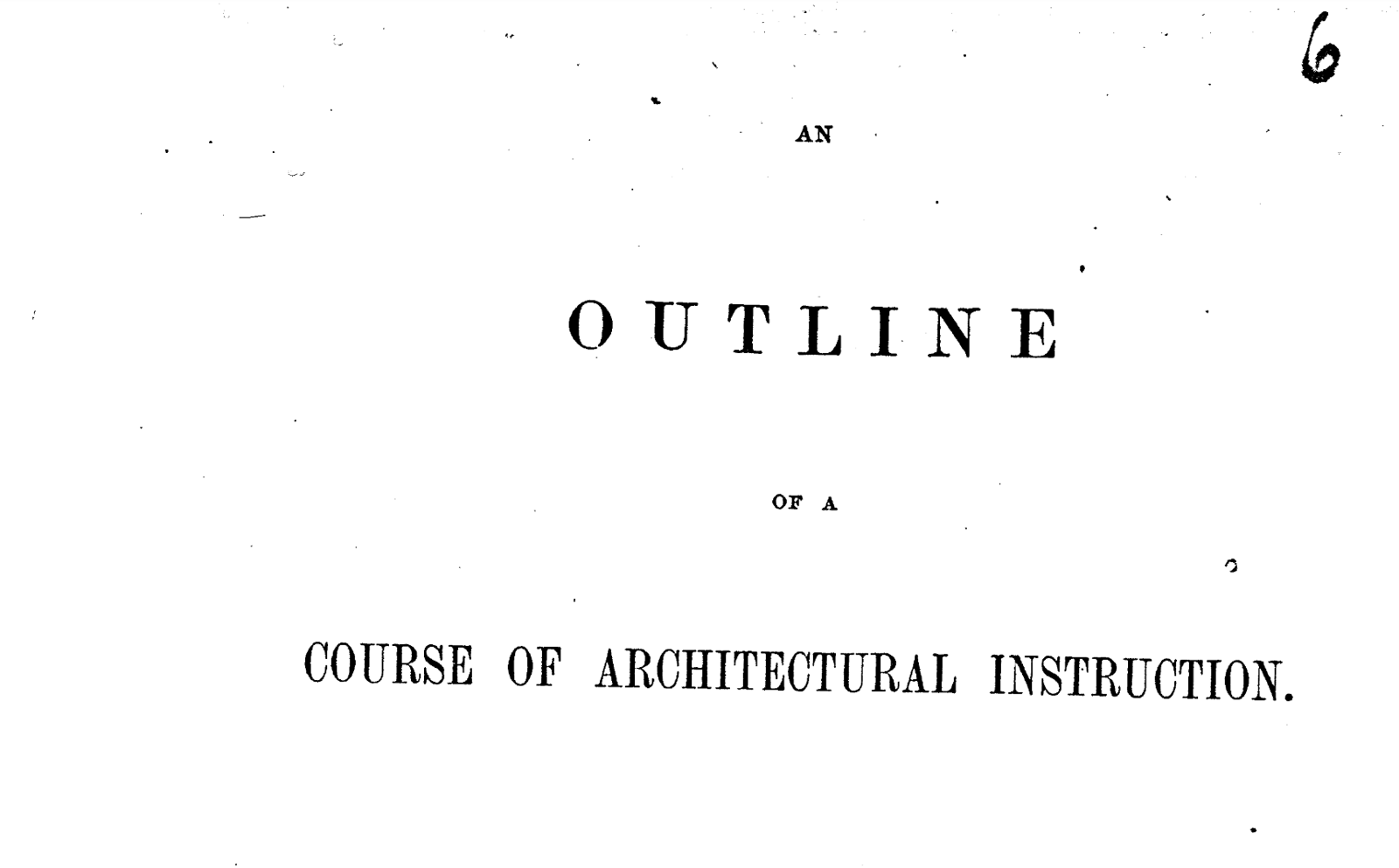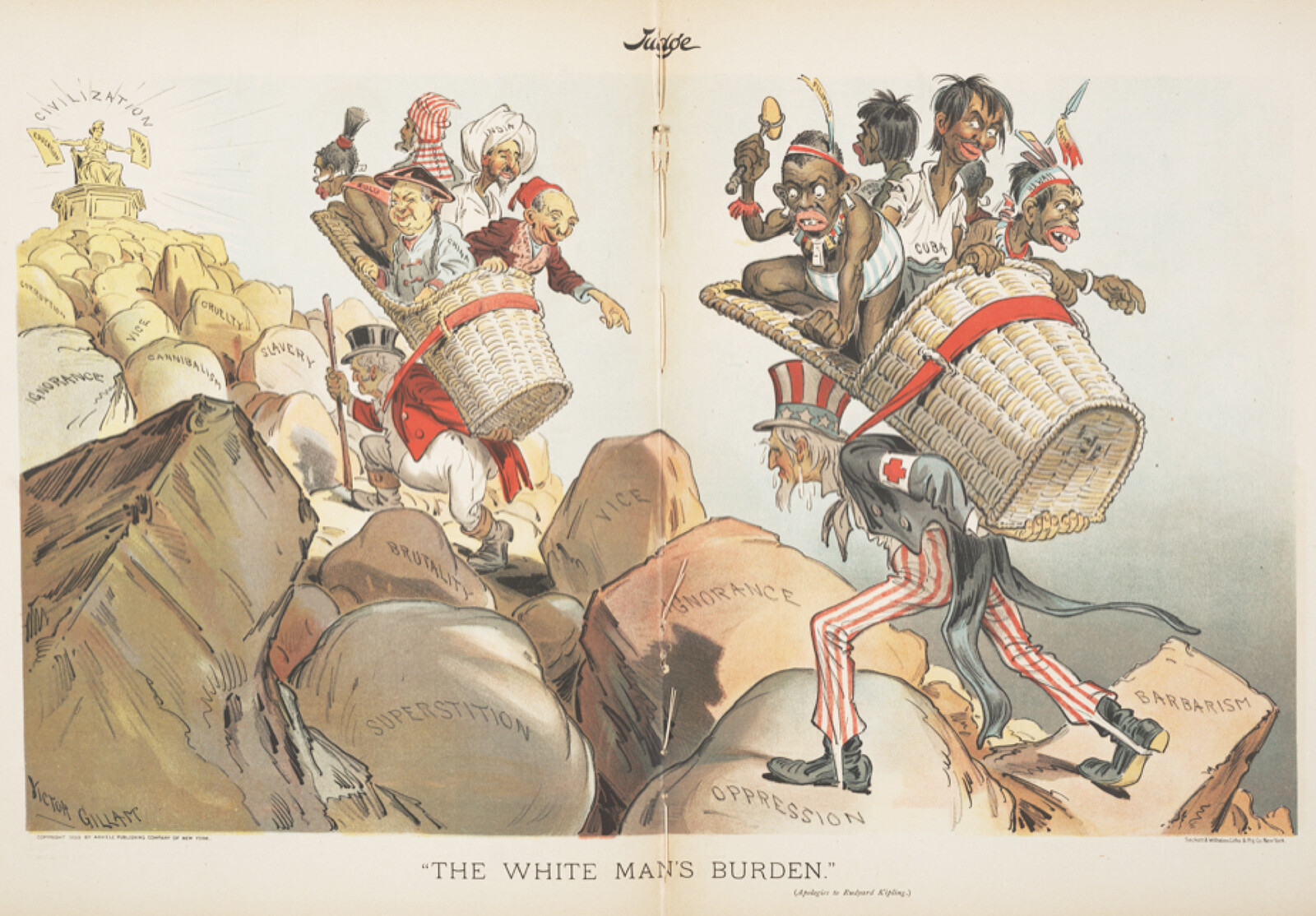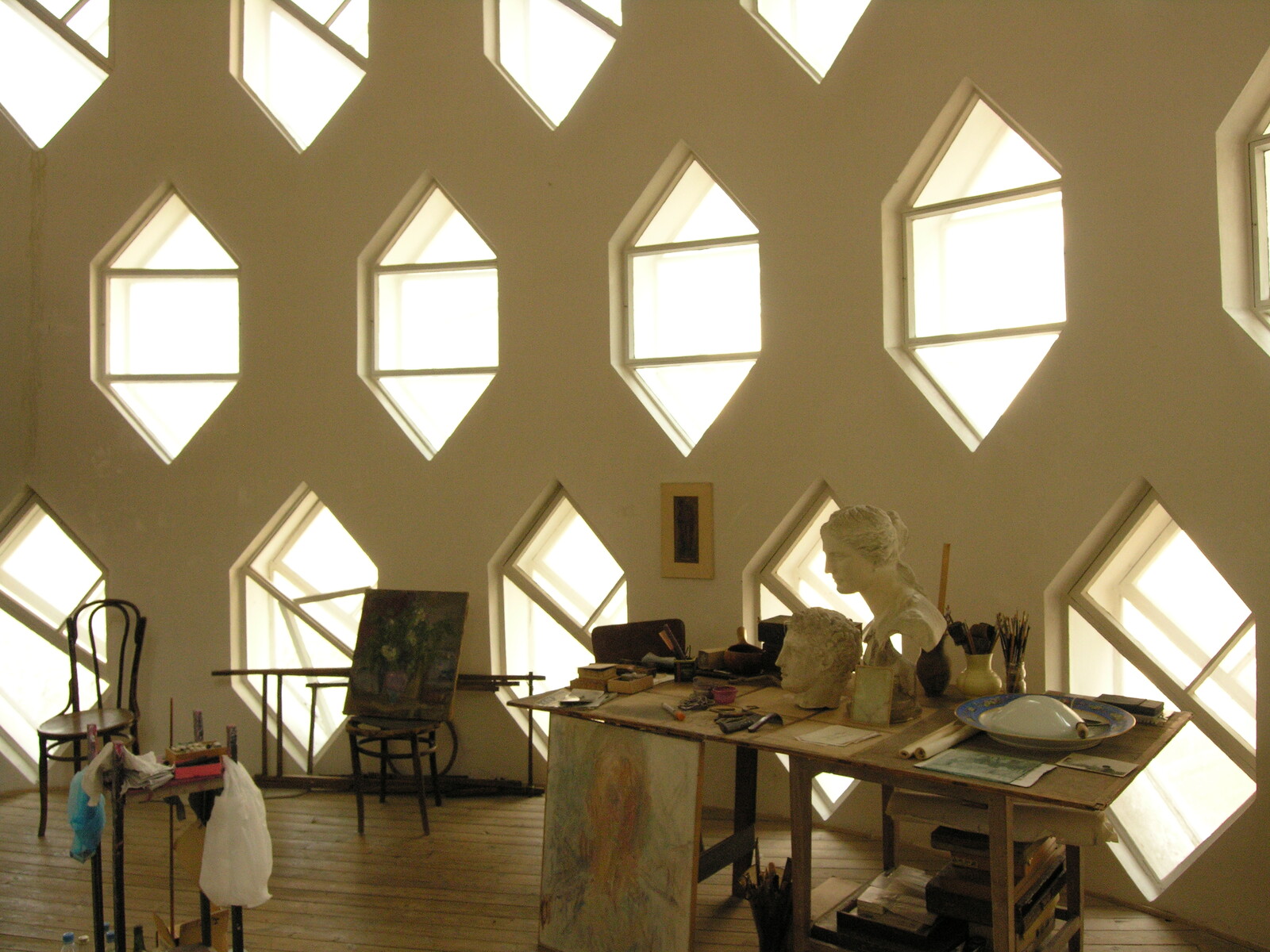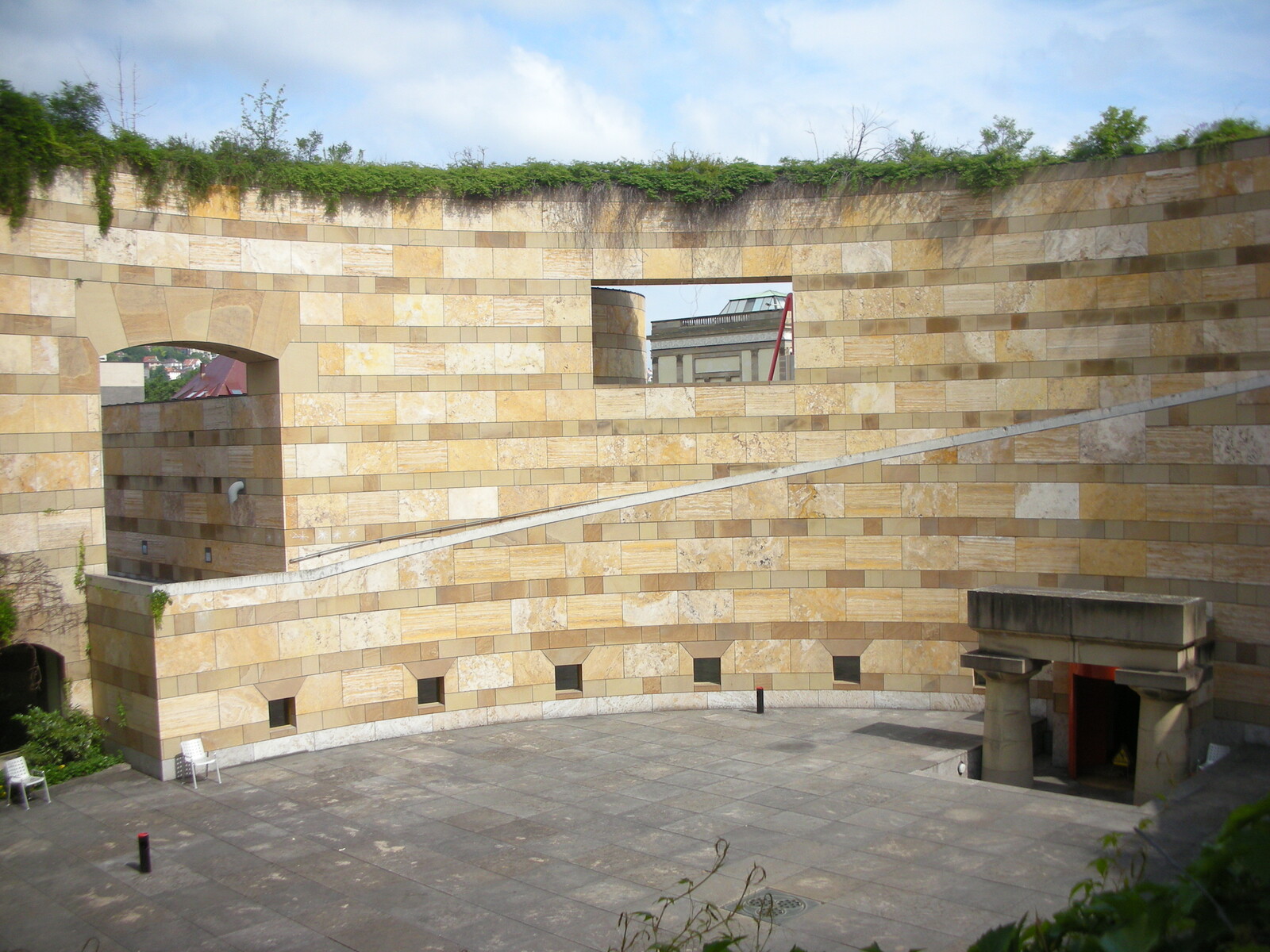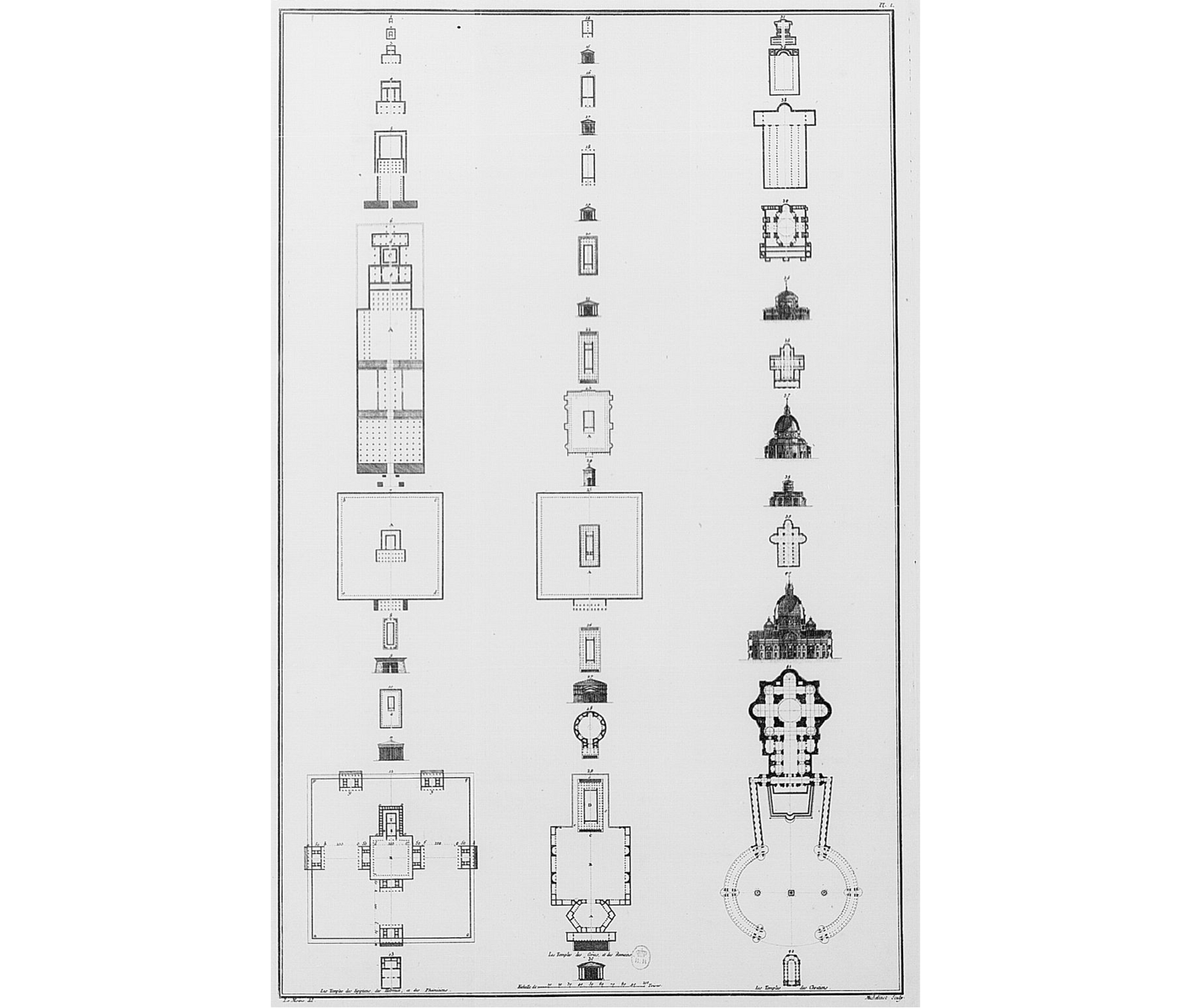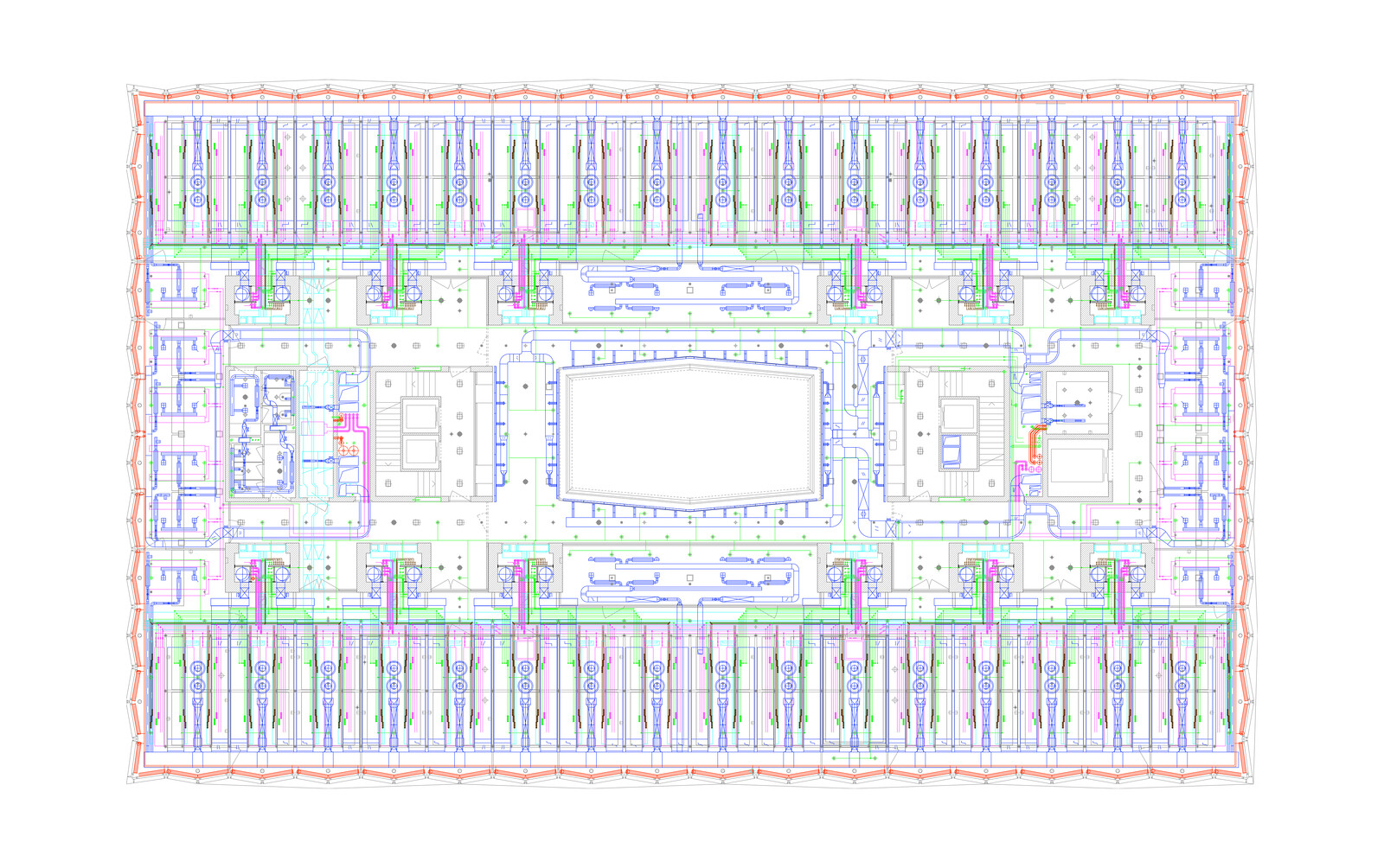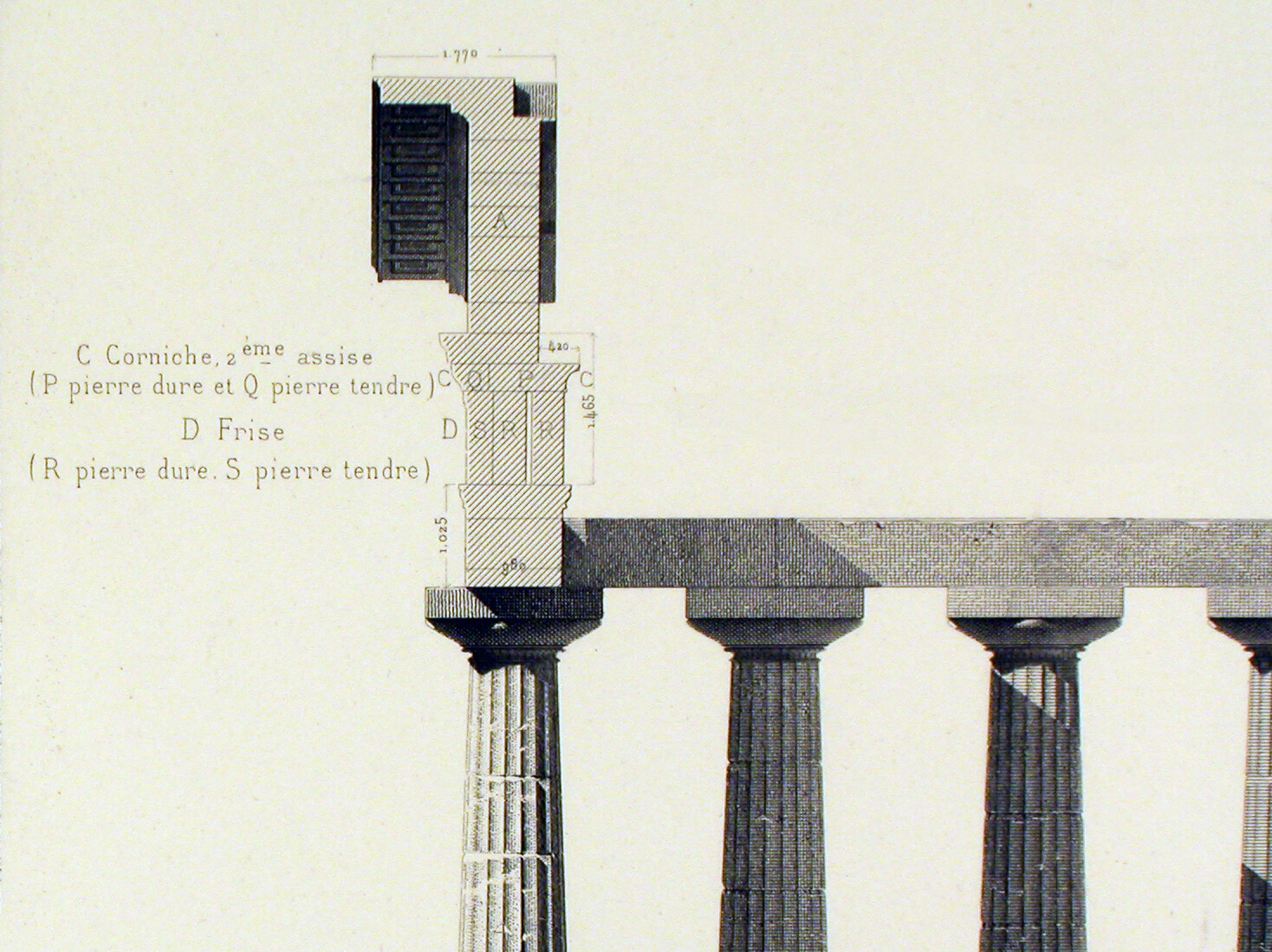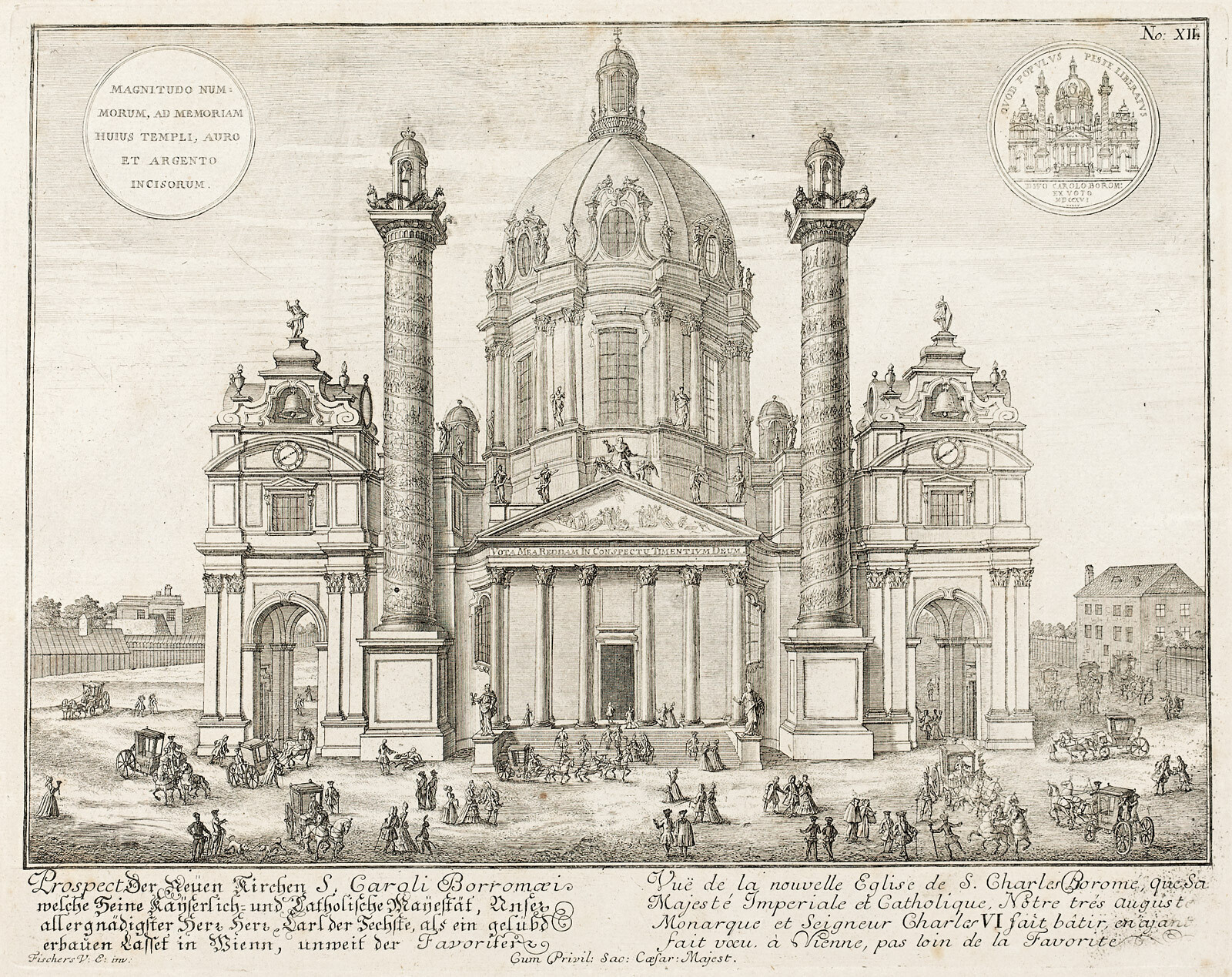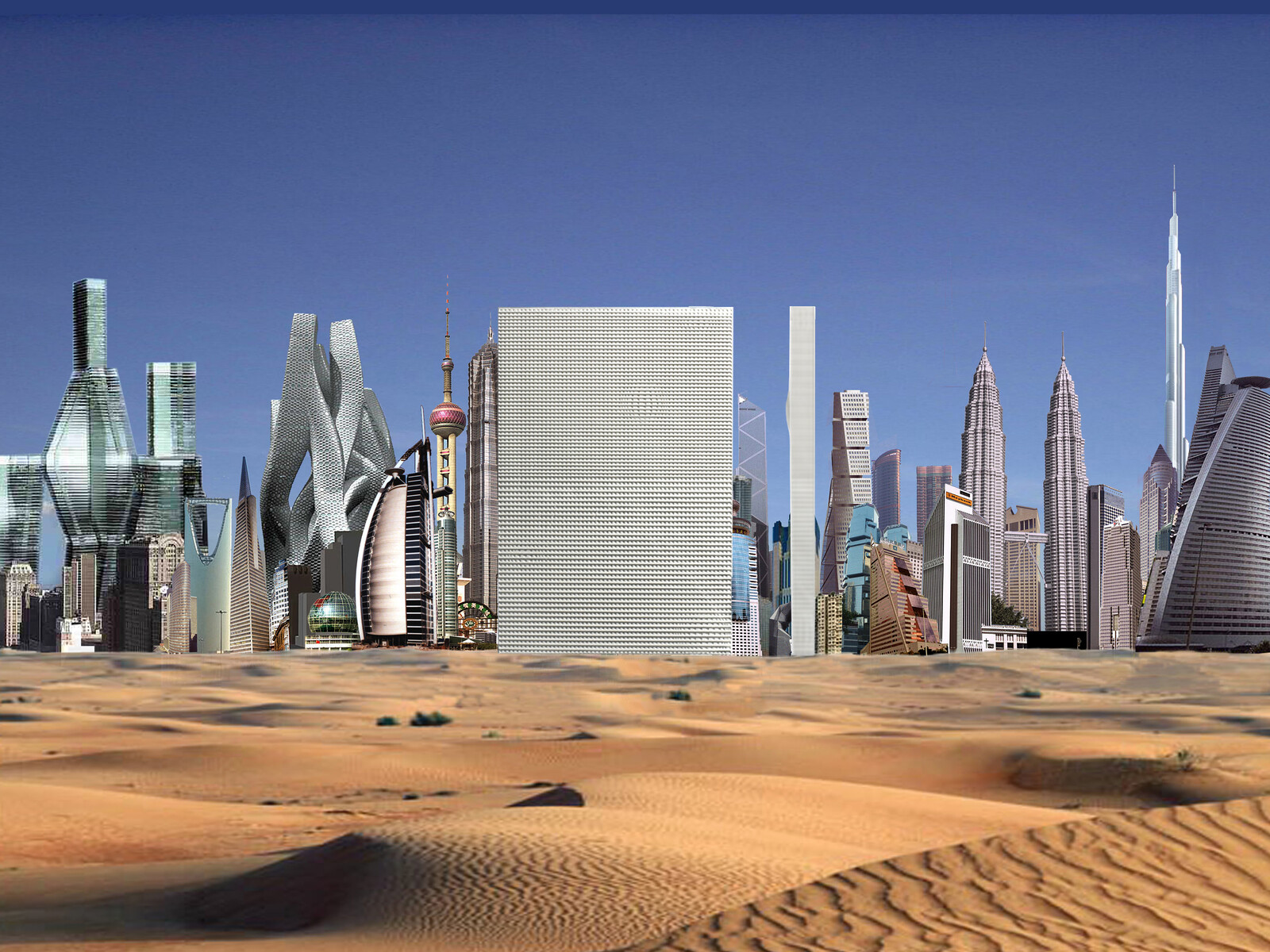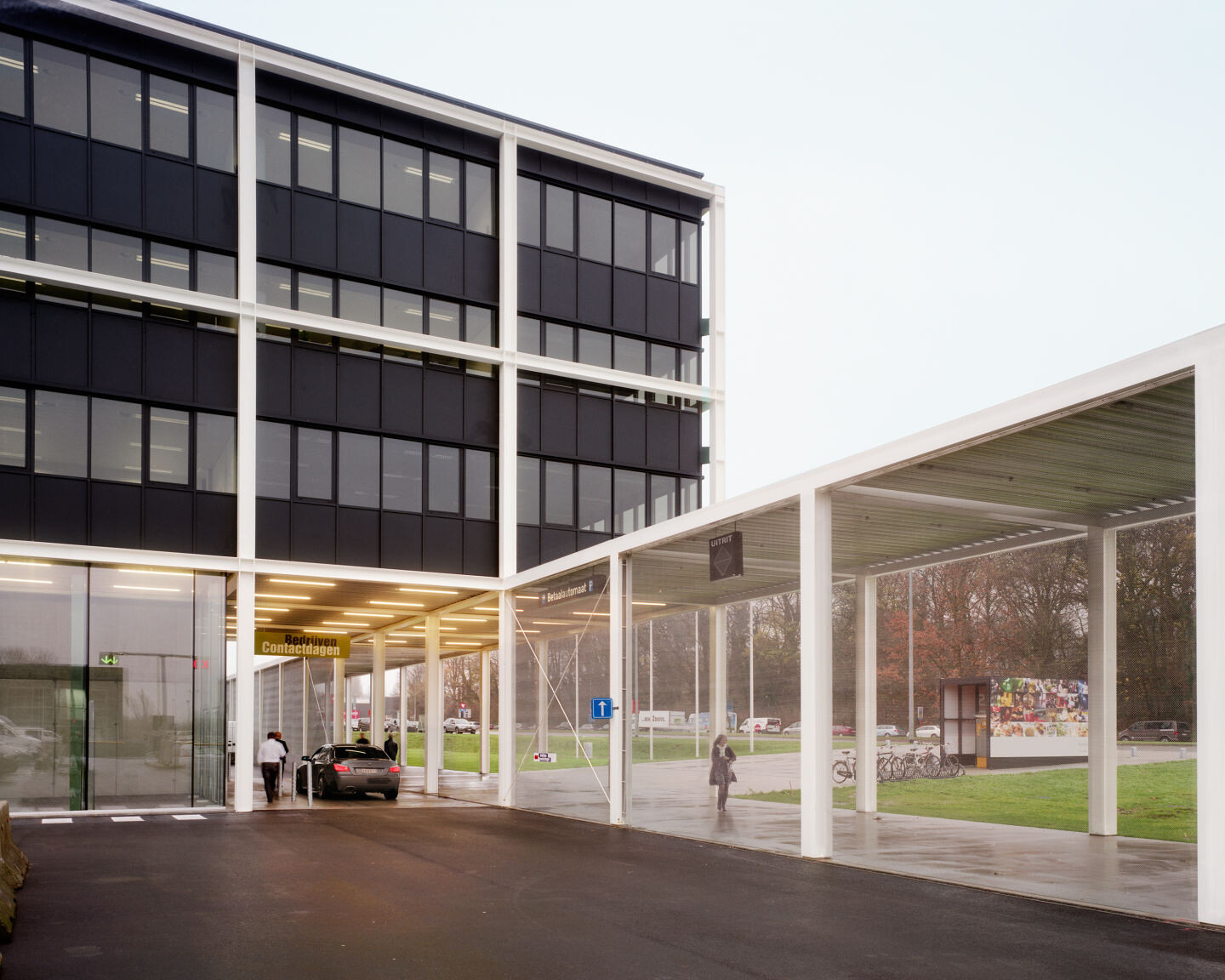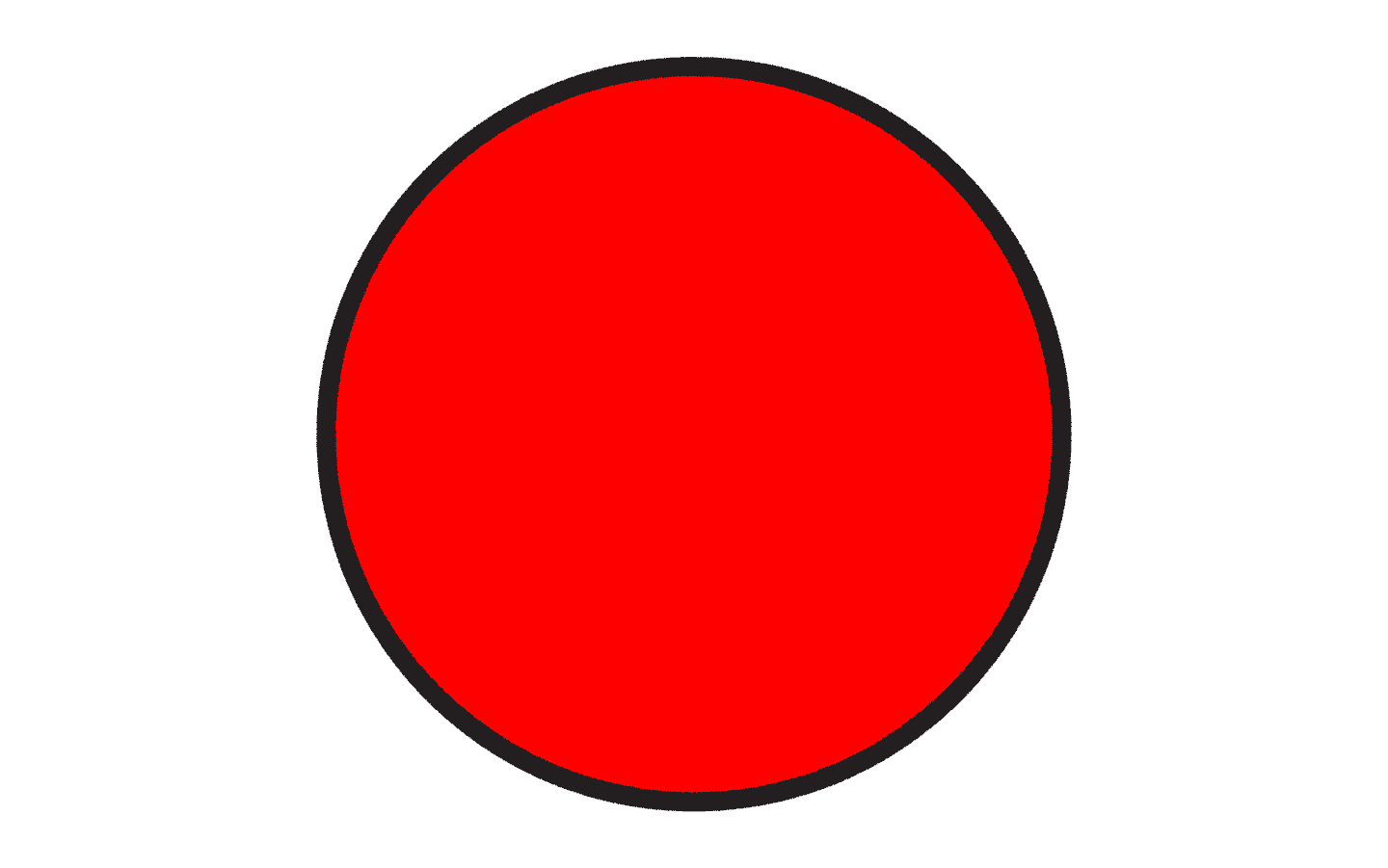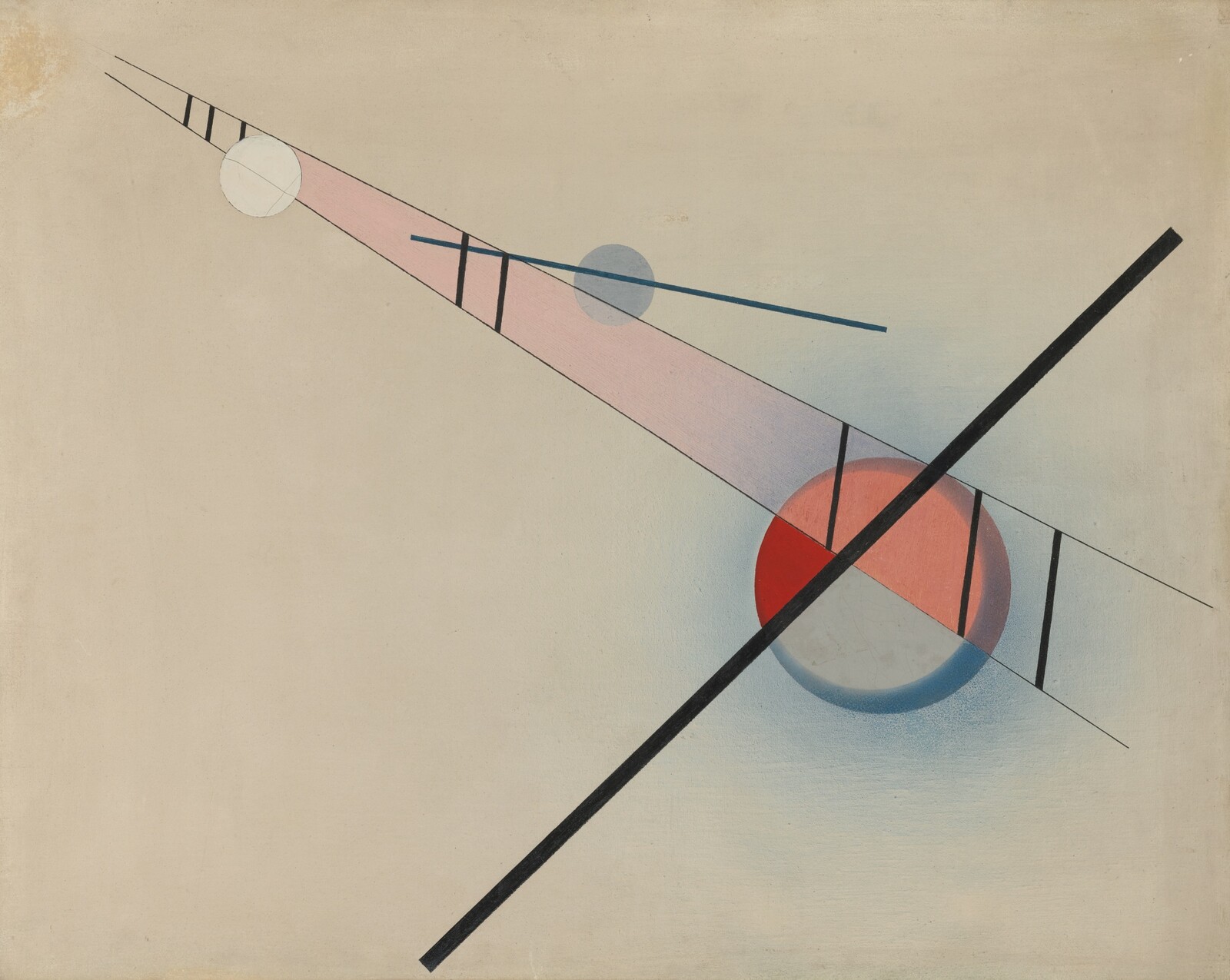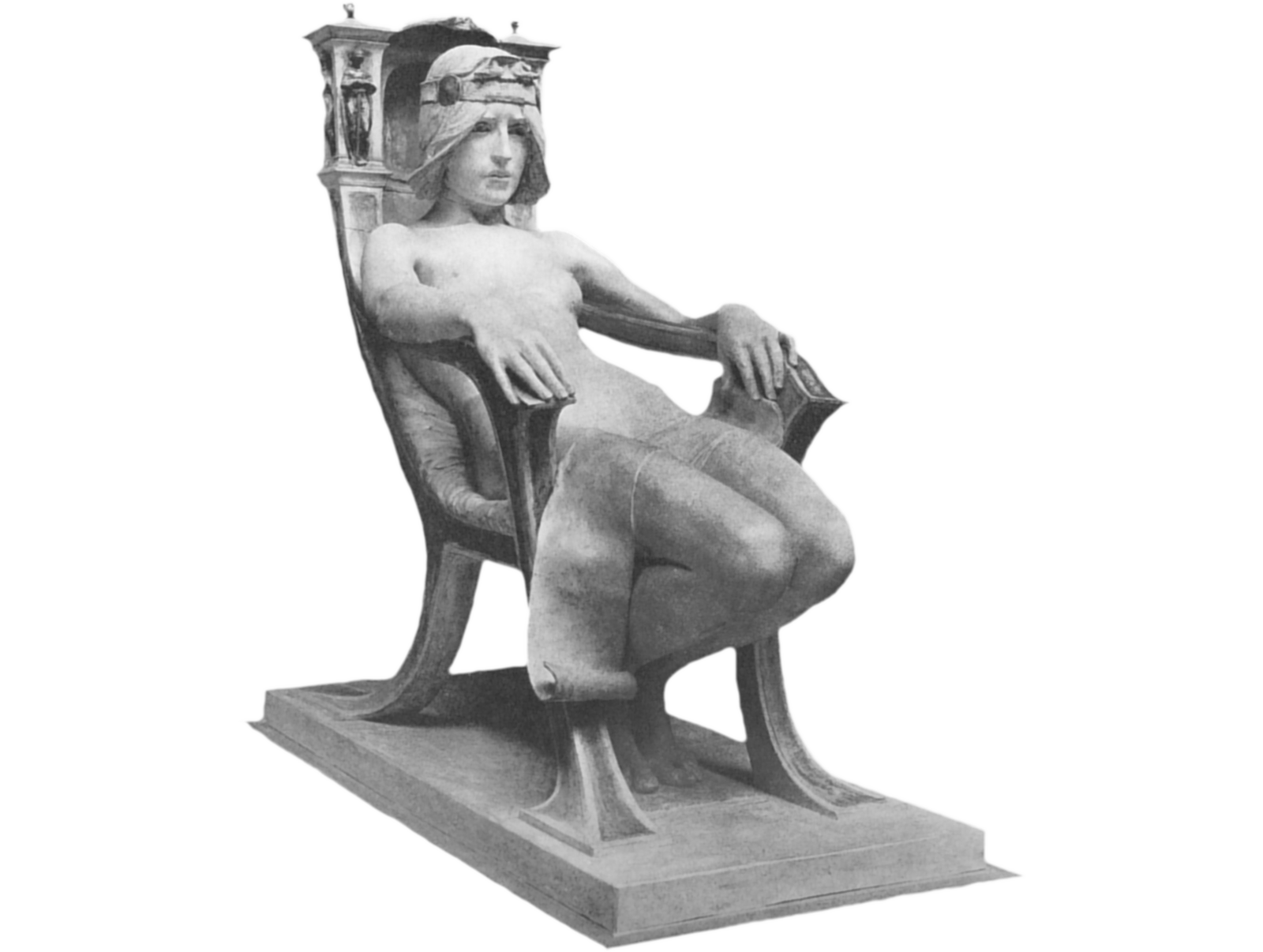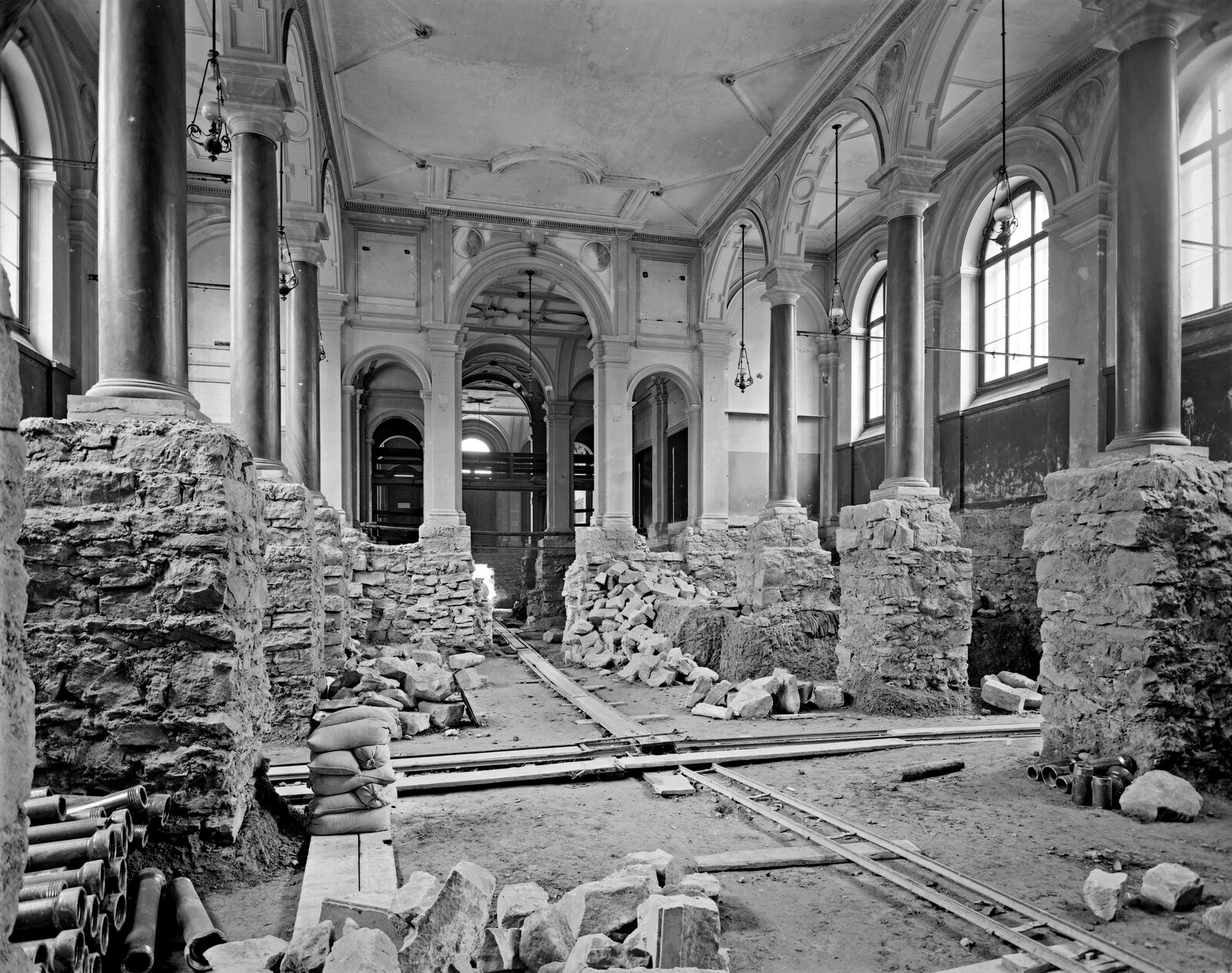Peter Eisenman: The end of theory, even as a question, is not a neutral statement. And as a person who’s been faced with the end of theory for fifty years, it’s not a new subject. But it must be said that there is no end of theory. According to Jonathan Culler, the “end” of theory is somewhat inherent to the logic of theory itself. In his book on literary theory from 1997, in a chapter titled “What is Theory?” he writes:
“The unmasterability of theory is a major cause of resistance to it. A good deal of the hostility to theory, no doubt, comes from the fact that, to admit the importance of theory is to make an open-ended commitment, to leave yourself in a position where there are always important things you don’t know.”
Kurt Forster: When this school, the ETH, started back in 1855, it had three well-known figures who, despite the demise of their reputations, still represent three domains of architecture that we still need to occupy, contest, or overcome. First, it had Gottfried Semper, who has, to this day, proven to be one of the few minds in the field capable of stimulating contemporary thought. Second was the German structural engineer Karl Culmann, who in 1866 published probably one of the most historically significant books on construction and technology. His books made visible the curves representing forces at play in architecture. His teachings, which were implemented by his pupils, for instance by Maurice Koechlin in the Eiffel Tower, finally knocked architecture off its orthogonal pedestal. And the third person was, of course, Jacob Burckhardt, one of the nineteenth century’s most important cultural theorists and historians. Therefore, one could say that architectural history, as a practice, as a self-conscious and pedagogical subject, was divided from the start. Architecture entered the institution as a big, yawning void, and we should understand this major period of architectural history not as one that was consolidated and beautifully integrated, but divided. This school started out with the sense that architecture is not coincident with a well-known substance, nor is it something that’s necessarily supported, or generated, from a philosophical proposition, but rather that it emerges from the void left between the two.
Philip Ursprung: This idea of the void reminds me of something that Jacques said in an interview once, that when you were studying architecture, at the start of the 1970s, people were talking a lot, but architecture, in a way, was not there. What was the role of architecture theory in this void, or what could it have been?
Jacques Herzog: What is theory? Before we discuss its possible “end,” we have to agree on what it means to each of us and—more importantly—what theory should be so it supports the role of architecture in our societies. The most important theoretical works of the past—by Vitruvius, Alberti, Palladio, Semper, Schinkel, or Le Corbusier—no longer significantly influence contemporary production and discourse. And they haven’t for quite some time. When we started out in the 1970s, the hottest texts were those by Venturi and Rossi, but our fascination with them was short-lived. Neither Rossi’s nor Venturi’s theoretical message was manifested in relevant, compelling built work. They left no legacy of a “physical architectural shrine” that would influence and inspire future generations. Architecture does not speak in words; it speaks physically. All theory must be inherent so that you feel it, consciously or unconsciously. We all know that architecture can have an almost magic effect on people. Chartres has that magic, the Mezquita in Cordoba or Ronchamp, but also non-religious architectures such as the Eiffel Tower or the Palazzo Rucellai. We perceive architecture with all our senses. Language is not enough to describe it. But we can and should talk about it, discuss and debate it: architects, critics, historians, and especially the people who use the buildings and cities that we conceive. What platforms do we have today for such debates? Print media has lost its once-dominant role. There are hardly any architecture magazines left. Reports in the New York Times, in Le Monde, El Pais, NZZ, or SZ have become rare and harmless. Social media may one day become a relevant platform for architectural and urban debate, but that hasn’t happened so far.
PE: Alberti wrote De Re Aedificatoria in the fifteenth century, and we wouldn’t think much of Alberti’s four or five buildings if he hadn’t written that book. The same, I would argue, applies to Palladio, because if you go to see these villas one-on-one and you see the reality, you say “huh”? But his book, the quattro libri, is stunningly important. The same with Le Corbusier; there are a lot of white houses, but aside from one or two, who would think of Le Corbusier if he hadn’t written Vers une architecture? Robert Venturi, for sure, nobody would remember. Maybe for one house, but he wrote Complexity and Contradiction. Built work is not the only thing about architecture. And the reason why we have a discipline, the reason why we’re here studying, is not to learn how to build better, or that built work encompasses the only important condition that exists in architecture. Built work can be theoretical, but sometimes books are more important than buildings.
JH: Books more important than architecture? I suppose you could claim that books of poetry or literature are more important than their oral heritage. But books about architecture, books written by architects? Who cares about their texts, except for a very small academic elite? Not a single architectural text has survived that continues to inspire today’s architects the way built work obviously does! I’ve written a lot of texts since we first started, which were urgent and vital to understanding what we are doing or what others are doing or have done. Maybe they even had an impact on others, but their main role has always been to support our architectural work, to help make it more precise. If they have an impact on others, all the better. But that’s not the point. Our texts are not literature. Our language is functional, technical, journalistic… it reads like a newspaper; you can throw it away after you’ve read it. It doesn’t withstand time, but buildings do.
PE: Perhaps, but something that contradicts your statement is that the Alternative für Deutschland platform in Germany wants to get rid of my Holocaust Memorial in Berlin.
JH: Why is that a contradiction? As I said, you feel architecture, and the AfD feels it with a vengeance. What you did in Berlin is a memorial but it’s much more than that precisely because it’s such good architecture. It will survive and inspire people whether they see it as a memorial or as an extraordinary sculptural experience. Architectural beauty expressed through physical reality is what seduces people, not the theory behind it.
KF: That’s exactly what Alberti said: if it’s really beautiful, they won’t destroy it. That was a theoretical proposition, and imagine that it was made at the time when it was normal for an army to beseech a town and put a torch to it! That beauty is the last resort and would stop the killer. But okay, I cannot bite my tongue off with regard to reality, because when we name it, when we name that reality, there’s no question that it has all the grip and power that Jacques invokes. So you’re right: that is what people respond to. That’s what they have to act about. But it’s curious, isn’t it, that reality as such is not actually there, graspable: it is what you say it is. Definition holds a tremendous power. What word you choose to describe or define something is incredibly important. If you take the wrong word, you’re down the river already, or you can’t turn the argument around, because you don’t have the right weapons; you don’t have the words that will hit back at the other with the same force. So I think the notion of the all-powerful, impenetrable, dark, somehow inexorably active reality that preempts every other option and choice assumes a different name. It’s also just an entirely different thing; a different thought from one moment to another, and in one culture or another.
Semper’s unwritten third book was to be about anthropology, sociology, economics; all the factors that, in the end, provide the planks on which you walk with an idea, a thought, an anticipation, into the dirt of everyday reality. But the very language you use in order to describe those forces are the result of the particular concept you make of that reality. Reality is a concept that is profoundly and necessarily theoretical. It is philosophical. It doesn’t exist outside of the capacities of thought to frame it that way. That’s why theories of the early-nineteenth century such as those of Karl Solger, a very important figure and friend of both Schinkel and Semper, worked on the idea that the thinking behind concepts is what enables one to act. So theory is not the opposite of reality; theory is not a gratuitous addition. Theory is an enabling instrument. It lets you understand something about that reality, and therefore respond to it.
JH: Reality is not just a “concept” that is “profoundly theoretical”… I totally disagree. Such thinking was en vogue in postmodern discourse of the 1980s and 1990s, advanced especially by French philosophers. Reality was seen as an annoying disease that we would be overcome in an age of dawning virtuality. But we all got a rude awakening: the twenty-first century started with terror attacks in New York, power cuts in Rome (“la notte bianca”), financial crises, floods and hurricanes in Asia and America. Disasters aren’t new but we’ve forgotten that those realities are part of our human condition on this planet. The inevitable truth is that we are physical and we are subject to gravity. Architecture and urbanism are especially bound to these elementary forces. The more we understand that, the more specifically we can respond. That’s what we try to do with every single new project, on a different site, and with a different client. And that means trying to be aware of preconceived notions, of any so-called theory. Each project creates its own conceptual trajectory. If there is any underlying idea, I would call it “critical perception.” Take your theories off their pedestal, Peter.
PE: But you are the one who is putting them on a pedestal. All we’re doing was saving it from drowning, giving it an oar, because the supposition here is that theory is dead. All I’m saying is you cannot operate without theory, that you are only here because, in fact, you have a theory in your work. It’s manifest in your work. It doesn’t have to be written. I could write what your theory is for you.
JH: Maybe you’re right. We do have a theory, a theory of perception that is based on undoing perception. That’s hard work because perception is never innocent. It’s hard work to recognize your preconceptions and expectations so that you can overturn them. Our late artist friend Rémy Zaugg, with whom we traveled and worked together for over twenty-five years, was a crucial influence in that respect. We also try to avoid any kind of writing in books or publications that aims to pin down a specific kind of “Herzog & de Meuron thinking.” We are not moralists, we just think it’s counterproductive.
Architects often write in order to define their thoughts and advance their careers, like Le Corbusier and also the architects that Peter mentioned. Writing is a kind of political vehicle to communicate their ideas. So far so good. But Le Corbusier perfectly demonstrates how great built work survives texts and books. Ronchamp will inspire people for generations. Ronchamp does not need Vers une Architecture. But Vers une Architecture needs Ronchamp. Visitors to Ronchamp—seduced and enchanted by the magic of the place—may want to find out more about its creator. So maybe that will rescue Le Corbusier’s theories from oblivion.
KF: Let me make the proposition that it’s not just the words you choose to describe your buildings but also how you publish them—whether you arrange them into typological collections like one volume on museums and one on railroad stations, or chronologically, etc.—that puts forward a claim. This was first done by Karl Friedrich Schinkel, who decided in March of 1819 that he was going to publish his work, Volume I, but he had only one work. He therefore had to fill the pages and anticipate a sequence that he could not possibly know at the time. He was no prophet of the next decades that would be filled with work, but what he was certainly prescient of is that it matters more how these things line up in the narrative of an architect’s professional life than what they may individually be. But this depends, because the sense you can make of an architect’s work beyond an individual instance of it depends on the claim that there is something that emerges only from this perspective, the one thread that binds the life of the architect to the fate of a place, a culture, a society.
PU: As a historian, I look at the impact theory has had over the years. If I go back to this school and this room, when in the early 90s Peter you were here talking about the Greater Convention Center in Columbus, Ohio, we were all expecting Peter Eisenman, architectural theorist, the architect who writes and occasionally builds. But instead what we got was a fantastic firework display of slides of the Convention Center. I remember you telling us about the disorientation that the patterns in the carpets should produce, and how the oblique walls would affect a sense of not knowing where to go. And I remember my reaction, which was that this theory, this rhetoric, doesn’t have very much to do with what you were showing us, because I thought what you were showing us were just extremely beautiful spaces and colors. So, in a way, your theory, or rhetoric, or words, were detached from the images. I was suddenly not listening to the Theory Eisenman I was expecting, which in fact, that might be the problem. But still, I feel like something shifted in the relationship between architectural practice and theory.
PE: I think we have to acknowledge a certain personal trajectory here. When I came to Europe for the first time, I had graduated from Cornell, from Columbia, I’d won prizes, and I was a Design Architect. I was going to go into practice. I knew little about the history and theory of the discipline. I had worked for Gropius. I had worked with Michael McKinnell, architect of Boston City Hall. Then I met Jim Stirling, and he looked at my work and said, you are clearly a good Design Architect, but you don’t know anything about architecture. Go to Cambridge and be with Colin Rowe. So I went, and I realized that there was another authority in architecture that could be active, and that is the word; that the idea was equally, if not more powerful as design. I chose that path. Jacques chose another. We just have to acknowledge that both exist.
JH: Yes, of course both exist. I did a lot of writing at the beginning of my career. I needed to get more clarity about what was happening around us. Postmodernism, Neo Constructivism… all the movements and designs we couldn’t identify with. Texts such as “Das spezifische Gewicht der Architektur” (“The Specific Weight of Architecture”) were the result of that search for orientation. It was a very intense back-and-forth between designing and writing and it helped us a lot to find our own way into the world of architecture. Even now when I work on texts like “The Inevitable Specificity of Cities,” the writing gives us a lot of impetus for our architectural projects. And yet, the very act of writing is what makes me so acutely aware of its shortcomings because built work inevitably turns out to be stronger, more complex, and more inspiring. The writing is not an end in itself, the way it is in poetry. In fact, like I said, it’s dispensable. Once the building has been built, you can discard the printed word. That doesn’t work with a poem, not even when you memorize it.
PE: But I think one thing we’re missing is a political one. Architecture has always been in the service of political power. You see that in Piazza San Marco. Ninety percent of all the tourists who go to Venice end up there taking pictures of pigeons and façades. None of them go to Redentore or San Giorgio Maggiore because they cannot read architecture. I would argue that close reading architecture slows down the possibility of power. I want to make sure that you can close-read built work, not just philosophy. If we could teach architects to slow the drive for power that architecture represents, we would have achieved something.
KF: In this regard, it is obviously crucial to know which wagon of thought you hitch your own thinking and your own work to, because that is what one makes of reality, however devastating and unconditional it may be in its manifestation of power. However powerful that reality is, you have to develop a set of concepts and thoughts in order to say what it is, and therefore, understand how you as an individual can and are going to act.
The enormous variety of work from Herzog & de Meuron over the last ten years is completely disorienting. You have to ask yourself: where does it come from? Where does it go from here? How can these things be side-by-side? How can they exist moreover in the minds of the architects? If it were not for the absolutely determining character of Schinkel or Le Corbusier’s biographical lifeline, it would be impossible to organize their work properly. I would argue that the absence of any kind of confining theoretical position that characterizes their work enables them to bring the same degree of intelligence to things that appear, on first sight, outright contradictory. But behind their appearance, we can discover and identify, without too much effort, certain coherent and interesting thoughts and ideas. But these ideas do not really exist in the individual buildings, where they would be only a token, a little relic of thought. But they exist across the buildings, across time, across the different cultures, continents, and challenges these buildings have met.
History/Theory is a collaboration between the Institute for the History and Theory of Architecture (gta), ETH Zürich and e-flux Architecture.
Category
History/Theory is a collaboration between the Institute for the History and Theory of Architecture (gta), ETH Zurich and e-flux Architecture.
